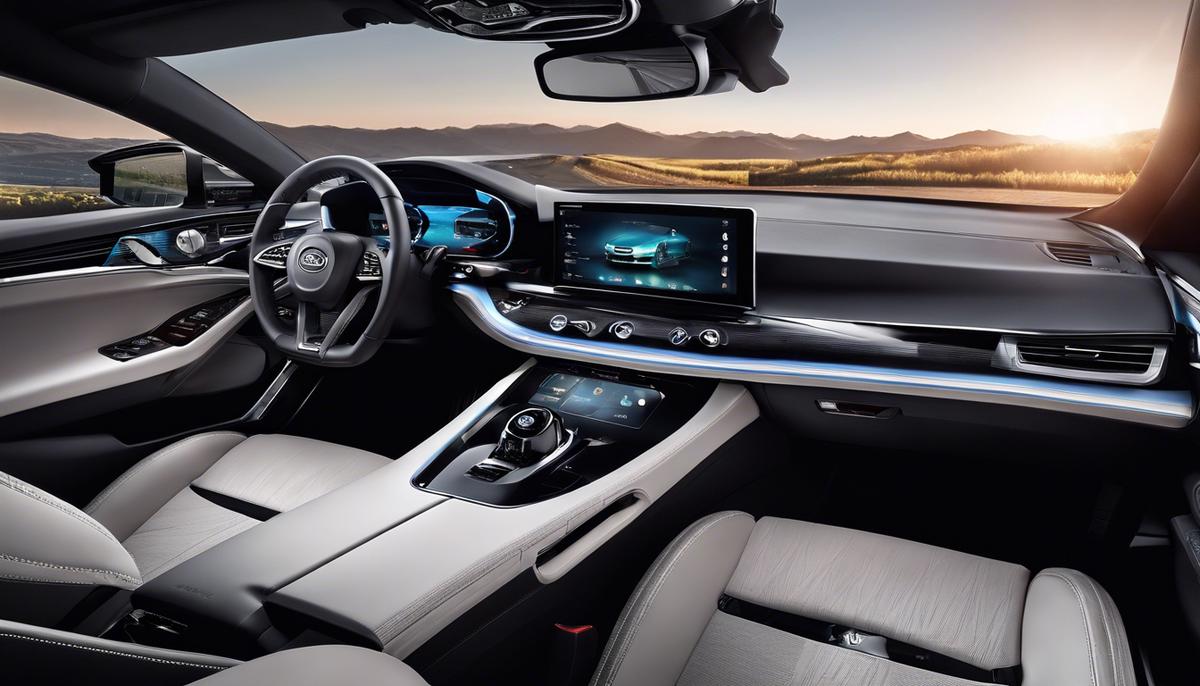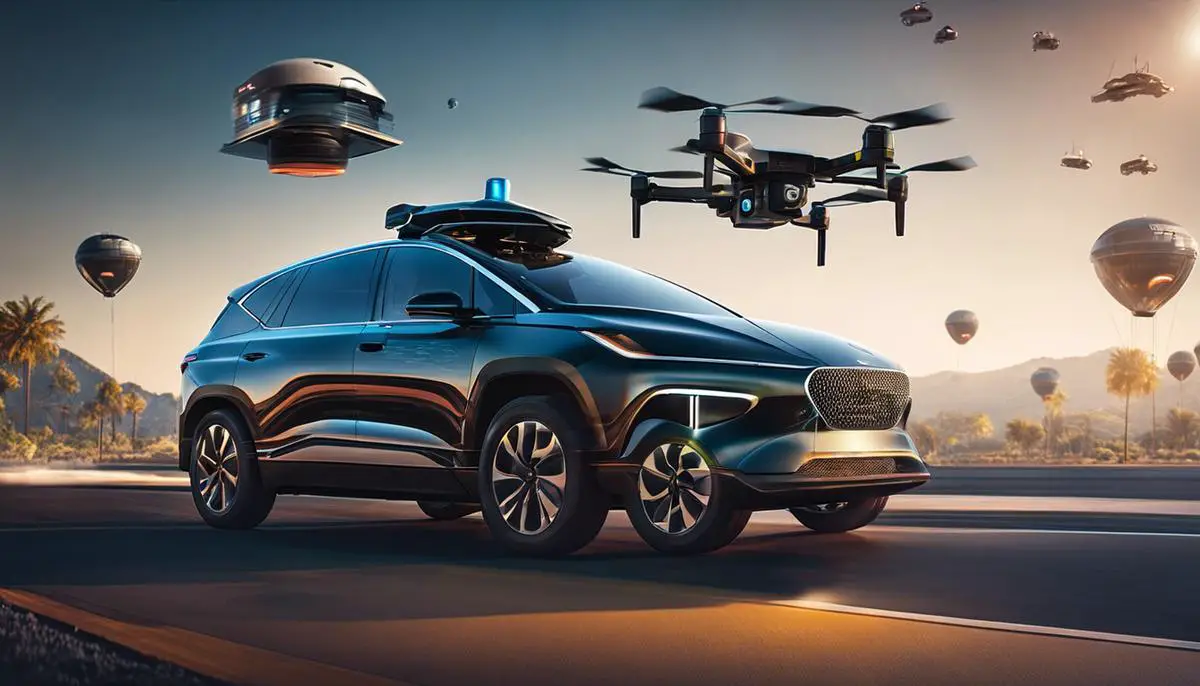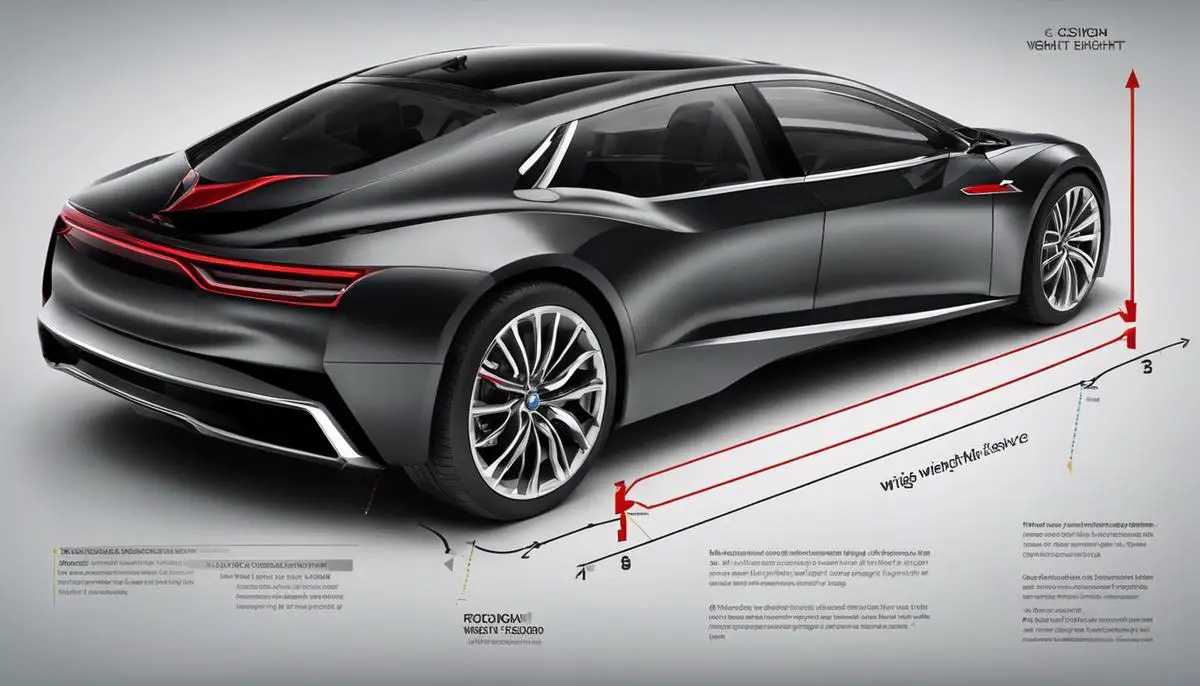As we venture deeper into the 21st century, we are witnessing an unprecedented metamorphosis of automotive technology, heralding a new era for the world’s drivers. Advancements in driving technologies, such as autonomous vehicles, vehicle-to-everything (V2X) communication, electrification, infotainment systems, and advanced driver assistance systems (ADAS), are redefining our driving experiences – from the way we interact with our vehicles to how they interact with the world. This exploration seeks to delve into each of these groundbreaking developments, presenting an informed glimpse into the future of driving, charting the potential benefits and addressing associated challenges.
Contents
The Autonomy of Vehicles
Autonomous driving technology is revolutionizing the way we drive.
It’s a fascinating field that unfolds each day with new advancements and innovations. This transformative technology is not just a trending buzzword, but it’s actually redefining the concept of driving, and how!
At the heart of autonomous driving is the principle that a car can guide itself without human intervention, a seemingly futuristic concept now turned reality. Now, isn’t that intriguing enough to delve deeper and understand how this is possible?
Break it down, and it’s a marvelous mix of various state-of-the-art technologies. Autonomous driving merges automotive design and engineering, computer science, artificial intelligence, sensors, cloud computing, big data, and Internet of Things (IoT).
Artificial intelligence (AI) plays a pivotal role in routing autonomous vehicles. Complex algorithms help the vehicle to understand and navigate its surroundings. The AI system learns from each driving session, improving its decision-making abilities as it goes, thus driving safer than the average person.
Simultaneously, advanced sensors such as Lidar (Light Detection and Ranging) and RADAR (Radio Detection and Ranging) detect and avoid objects on the road. Comparatively, Lidar is noted for its high precision in detecting small objects. Additionally, computer vision enables these vehicles to interpret and react to traffic signs and signals.
Another significant aspect is the role of cloud computing and big data. Autonomous vehicles generate a colossal amount of data every second they’re on the road. This data is analyzed in real-time to make safety decisions, then stored in the cloud for future references.
By employing IoT, autonomous vehicles communicate with each other and share useful information like traffic situations, increasing efficiency and safety. Imagine roundabouts and intersections where vehicles move seamlessly without any stop or wait times; it’s no longer a utopian dream.
So, how is this technology redefining the concept of driving? With autonomous driving, long, tedious journeys can be productive or relaxing. It offers the flexibility to read, work, or even enjoy a nap while the car does all the work. For the elderly or disabled, autonomous vehicles convey a sense of freedom and independence, being capable of taking them where they want to go, whenever they want.
Furthermore, the reduction in human error promises a safer driving environment. Fewer accidents mean lower insurance premiums, less congestion due to fewer incidents, and ultimately, savings in time and money.
It’s true that skepticism and legal issues exist involving driverless technology, primarily concerning safety and accountability. However, these are early days, and with every technological advancement, the future of autonomous driving appears brighter.
In conclusion, autonomous driving isn’t just about removing the driver but improving convenience, safety, and efficiency. It’s not only about changing how vehicles operate but also about transforming our roads, cities, and, significantly, our very lives. Yes, autonomous driving technology is redefining the concept of driving, for the better!

Connectivity: V2X Technology
The Revolution of Vehicle-to-Everything (V2X) Connectivity in Driving
For a while now, the motoring domain has been buzzing with an acronym that’s poised to redefine our riding experiences altogether – V2X. This stands for Vehicle-to-Everything connectivity, an umbrella term encompassing technologies that allow vehicles to communicate with any entity that may affect the automobile. It’s an unbelievably exciting development and here’s why.
Foremost, V2X builds on existing technologies like Wi-Fi and GPS to enable a dynamic network where data is constantly shared between vehicles, infrastructure, pedestrians, and more. Imagine your car alerting you to a potential hazard, such as a pedestrian stepping onto the road, even before you see them. That’s the magic of V2X!
When talking about safety, the potential for V2X to reduce traffic accidents is incredible. By allowing vehicles to communicate with each other, real-time data on speed, direction and position is shared to anticipate and avoid potential collisions. Consequently, V2X paves the way for safer roads, saving countless lives in the process.
Furthermore, V2X takes the concept of intelligent transport systems to the next level. It supports the idea of smart cities by facilitating information exchange between vehicles and traffic management systems. This level of connectivity can alleviate congestion, improve traffic flow, and ultimately contribute significantly to environmental sustainability through reduced emissions.
Next, ponder the remarkable efficiency boost in logistics and delivery services. With V2X, transport managers can monitor the entire fleet’s movements comprehensively, allowing precise reporting and planning. Instant communication with traffic infrastructure also means finding the quickest route, thus guaranteeing time and cost savings.
And let’s not forget the role of V2X in shaping the future of autonomous driving. V2X communication is an integral component of the system, empowering self-driving vehicles to perceive their environment accurately and make informed decisions. By offering real-time updates about traffic, weather, and road conditions, V2X technology enhances the performance of autonomous vehicles, making them more efficient and reliable.
Yet, it would be unfair not to mention the hurdles that lay ahead. After all, realizing full-scale V2X connectivity is no cakewalk. Key challenges are related to data privacy concerns, establishing standardized communication protocols, and infrastructure development. Despite these, the auto industry is bullish on the many positive outcomes that V2X promises.
So, as we inch closer to a future marked by technological convergence, V2X stands as a significant gear in the mechanization of the motoring industry. As lovers of the open road, let’s rejoice in the fact that we’re on the cusp of an exciting journey towards safer, more efficient, and eco-conscious driving, courtesy of V2X connectivity. Happy motoring!

Electric Vehicles (EVs) and Their Impact
Awesome, let’s bring this electric vehicles (EVs) chat back to the forefront of the conversation. Right out the gate, understand this – EVs aren’t just a fad; they’re part of a fundamental shift in how we view and treat transportation. With the previous sections covering autonomous driving and V2X connectivity, let’s now steer our journey towards the technologies driving the shift to electric vehicles, and how they’re shaping our future.
To fully appreciate this electric revolution, one must first understand the heart of any electric vehicle, the battery. Historically, lead-acid batteries have powered most EVs as they were reliable and relatively cheap. Today, the battery of choice for the modern EV is the Lithium-ion (Li-ion) battery, favored for its high energy density, efficiency, and longevity.
Advancements in battery technology and the ongoing search for alternative energy storage systems have led to breakthroughs like solid-state batteries. These batteries replace the liquid or polymer electrolyte found in typical Li-ion batteries with a solid material, increasing energy density and safety! This development is significant and more cost-effective, implying that EVs will continue to become even more affordable and efficient.
To manage these advanced batteries, Battery Management Systems (BMS) have evolved, utilizing sophisticated software to monitor and control each cell within a battery pack. Not only do they help extend the life of the battery, but they also improve the safety, reliability, and performance of the electric vehicle.
However, the shift to EVs isn’t solely about the vehicles themselves; it also encompasses the infrastructure that supports them. Charging infrastructure is crucial to this transition. Traditional home electricity supplies can charge an EV, but it’s a slow process. Enter the home charging stations and public fast chargers, specifically designed for EVs, they ensure quicker charging times and longer driving ranges.
High power charging (HPC) stations are transformative, capable of recharging an electric vehicle to 80% in just 20-30 minutes. As more of these chargers pop up across the world, electric vehicles become a more practical choice for everyday and long-distance travel.
The buzzword ‘Smart Grids’ fits right in here. A critical component of a future-proof electrical system, smart grids use digital technology to manage the flow of electricity from various sources, including renewable energy and EVs. This improved efficiency and reliability can lead to reduced costs and environmental impact.
Last but not least, there’s regenerative braking, a technology that recovers and converts kinetic energy wasted during braking back into electricity. This boosts the efficiency of the EV significantly, enhancing its range and reducing the wear on the brake system.
So, if you’re still skeptical about this electric transition, know this – every mile driven in an EV equates to a cleaner, healthier environment. It means less dependence on finite fossil fuels and a step closer towards sustainable transportation. It’s not just about cutting-edge technology, but a reimagined future. Electric vehicle technology isn’t something to simply get excited about tomorrow; it’s reshaping the world today. Together, let’s keep our gears shifting and eyes on this path, for it’s a journey that’s just starting to accelerate!

Photo by herrheckner on Unsplash
In-Car Tech and Infotainment Systems
Diving into the digital side of our driving evolution, modern infotainment systems and smart assistant capabilities are pulling the everyday commute into the future.
If you’ve been in a vehicle recently, you’ve likely noticed the central console transformed into a touchscreen hub of information, control, and entertainment – this is the infotainment system. These systems sync up with smartphones, allow control over the car’s climate, provide access to media streaming, radio, GPS map functions, and much more. Swiping and tapping have essentially replaced the traditional knobs and buttons.
But infotainment is more than just Spotify playlists and Google Maps. Advancements in these systems have led to the integration of Internet of Things (IoT) capabilities, potentially connecting our car to our smart home system. Imagine turning on your home’s lights or preheating the oven right before you reach home!
Infotainment systems have also grown to embrace voice command features. With smart assistant capabilities, a driver can keep their eyes on the road while still accessing the numerous functions of the car’s system. Commands can range from calling a contact to reading out text messages, and even setting climate control to a specific temperature. This voice-activated feature not only enhances safety by reducing driver distraction but enhances the overall driving experience.
We’ve reached the era of AI-based personal assistants. With technology like Apple’s CarPlay, Android Auto, and Amazon’s Alexa Auto, we’re seeing a personalization of the driving experience. These AI-based programs learn and adapt to the owner’s patterns and preferences, providing personalized playlists, route suggestions, and even alerting you about your upcoming appointments from your synced calendar.
Considering accessibility, these technological advancements are also proving beneficial for drivers with physical impairments. Voice commands allow the differently-abled to control the vehicle’s numerous systems without any manual intervention.
The infotainment system has also evolved to act as a learning tool. Features like tutorials or assistance with new and complex features aid in understanding the vehicle better. Moreover, tutorials are even employed to reinforce safer driving techniques, making the overall experience much more immersive and efficient for new or less confident drivers.
But, infotainment systems do hold their share of challenges. There are concerns over driver distraction due to the surge of available features. Cybersecurity, too, becomes a substantial point of concern as these systems connect the vehicle to the external world. Ensuring data privacy and system integrity is a topic of great focus in current infotainment system development.
Yet, modern infotainment systems and smart assistant capabilities have definitely enriched our interaction with our vehicles. As technology evolves, it will continue to blur the line between vehicle and smartphone, function and convenience, driving us steadily into a future where the journey is as engaging as the destination.

Advanced Driver Assistance Systems (ADAS)
As the world of autonomous driving, V2X, and EVs evolves drastically, the idea of a car with an infotainment and onboard smart assistant is now not as futuristic as it once seemed. Advanced Driver Assistance Systems (ADAS) are not only improving road safety using technology such as autonomous driving, V2X connectivity, and electric vehicle integration, but also enhancing the overall driving experience through innovative infotainment systems.
Infotainment systems have come a long way, from simple car stereos to multimedia touchscreens capable of media streaming, controlling car settings, and even displaying GPS navigation maps. What makes infotainment systems sophisticated is the integration with IoT, enabling drivers to gain a plethora of information at the swipe of a finger. Be it weather updates or the nearest charging station, the incorporation of IoT is transforming every vehicle into a data-driven machine.
Arguably, the most revolutionary advancement in infotainment systems are the voice command features and smart assistant capabilities. Users can simply speak their commands, allowing their eyes to stay on the road instead of fumbling with multiple controls. Further enhancing the user experience, AI-powered personal assistants are stepping up the game by personalizing the entire journey. They learn user preferences over time, tweak the vehicle settings accordingly, recommend routes, and even alert about upcoming maintenance needs.
Sounds impressive, right? But it doesn’t stop there. Infotainment systems are proving to be a boon for drivers with physical impairments as well. Accessibility features, like text-to-speech functions, eye-tracking, gesture recognition, and steering wheel-mounted controls, are making driving an inclusive experience.
Taking the driving experience to the educational frontier, infotainment systems can also act as learning tools. Ever wondered what that peculiar engine noise meant? Or puzzled over an unfamiliar warning light? Modern infotainment systems will explain it, providing an in-depth understanding of the vehicle’s intricacies to the driver.
However, with an array of features comes potential concerns. Driver distraction is one significant worry that engineers are constantly working to mitigate. Intelligent design and intuitive controls are paramount to minimize driver distraction and offer a seamless experience. Cybersecurity is another area of focus. As cars become more connected, they also become more vulnerable to hacking attempts. Manufacturers are spending resources to secure the internal networks of the vehicle and ensure safe data transmission.
As technology continues its upward trajectory, the future of infotainment systems in cars looks promising. With the advent of Augmented Reality (AR) heads-up displays, gesture control, and even potentially holographic assistants, infotainment systems will play an increasingly essential role in transforming the overall driving experience.
Technology isn’t just making cars safer, it’s also making them smarter and more enjoyable. With every innovation to the infotainment system, we move one step closer to a future where cars are not just a mode of transportation, but also our entertainment hubs, personal assistants, and continuous learners. The vision of technology-filled, safe travels is already becoming a reality, one advancement at a time. It will only get better from here!

Technology, in its relentless pursuit of perfection, is unequivocally transforming the auto-industry, creating safer, more efficient, and environmentally friendly cars. The revolution will not only enhance the driving experience but also help solve modern challenges such as road safety, mobility, and environmental conservation. As autonomous vehicles, V2X, EVs, and ADAS evolve, the landscape of transport will undergo a profound transformation. However, implementation of these technologies will require broad consensus among stakeholders, significant investment, and well-designed regulatory frameworks. As technological disruption redefines the contours of the automotive industry, we can only anticipate riding into a future where every journey becomes a smooth, green, and safe adventure.



